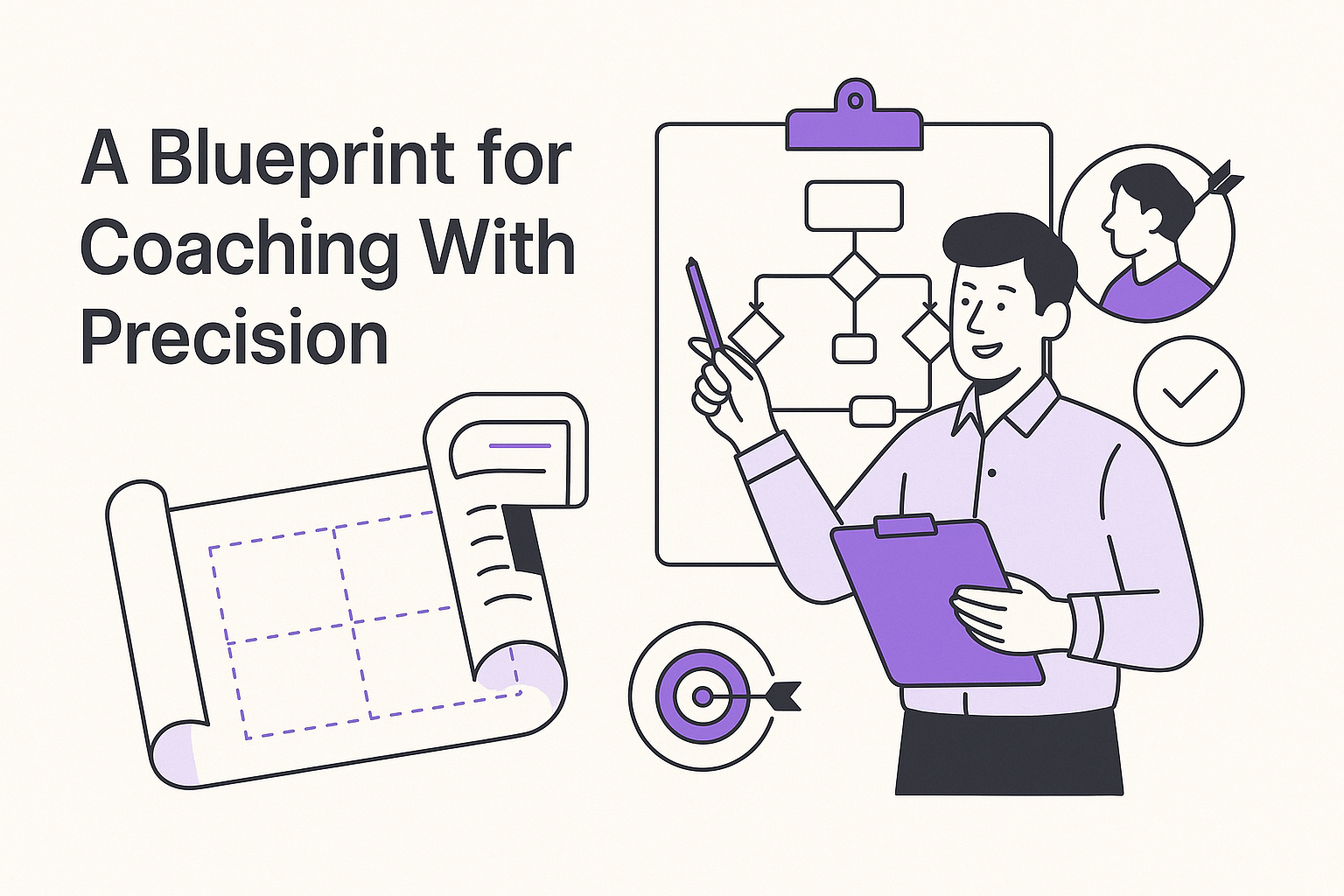How to Analyze Prospect Needs
-
Bella Williams
- 10 min read
Understanding the unique needs of prospects is essential for establishing meaningful connections and driving business success. Prospect Needs Analysis helps you uncover these requirements, enabling targeted solutions and a greater chance of customer satisfaction. In an increasingly competitive environment, this analytical approach is more relevant than ever.
The process begins with pinpointing the significant factors that influence your prospects. By gathering insights and identifying patterns, you can tailor your offerings to meet specific demands over time. Through effective communication and continual refinement, businesses can foster long-term loyalty and create lasting relationships with their clients.
Generate visualizations from your qualitative data. At Scale.

Understanding the Basics of Prospect Needs Analysis
Understanding the basics of Prospect Needs Analysis is fundamental for any business aiming to enhance customer engagement and satisfaction. This analysis begins with recognizing the unique requirements and preferences of potential clients. Understanding these needs is more than just gathering data; it requires an empathetic approach to address the specific pain points prospects face. By demonstrating an understanding of these needs, businesses can foster relationships built on trust and reliability.
To effectively conduct Prospect Needs Analysis, gather initial data through various channels such as surveys, interviews, or feedback forms. Employing tools like customer relationship management (CRM) systems can streamline this process. Once the data is collected, analyze it to identify common themes and trends. As you gain insights, craft personalized strategies that align with your prospects’ expectations, ensuring that your solutions resonate with them. Ultimately, this methodical approach will significantly enhance customer satisfaction and encourage long-term loyalty.
Importance of Identifying Prospect Needs
Identifying prospect needs is a fundamental component of achieving business success. Understanding what prospects value and require not only informs product development but also shapes marketing strategies. When businesses engage in a thorough prospect needs analysis, they gain insights that can lead to improved customer satisfaction. Satisfied customers are more likely to return, fostering long-term loyalty and trust.
Additionally, recognizing the diverse needs of prospects allows businesses to adapt their approaches effectively. This adaptability promotes stronger connections with potential clients, as they feel valued and understood. By prioritizing a deep understanding of prospect needs, companies can create tailored solutions that meet specific demands, differentiating themselves in a competitive marketplace. Ultimately, businesses that commit to this analysis are not just selling products; they are building meaningful relationships that encourage repeat engagement and positive referrals.
- Discuss why understanding prospects needs is crucial for business success.
Understanding prospect needs is vital for business success. When companies take the time to analyze what their prospects truly desire, they position themselves to deliver tailored solutions that meet those specific needs. This approach not only enhances customer satisfaction but also fosters long-term loyalty. Businesses that ignore these insights may miss opportunities, resulting in lost revenue and a negative reputation.
Furthermore, a thorough prospect needs analysis informs product development and marketing strategies. When companies grasp what problems their prospects face, they can create targeted messaging and effective products that resonate. Additionally, understanding these needs allows for a consultative sales approach rather than just a transactional one, improving customer interactions and outcomes. Overall, recognizing and responding to prospect needs is not just beneficial but essential for achieving sustainable growth in today's competitive market.
- Explain how it influences customer satisfaction and long-term loyalty.
Understanding prospect needs is essential for enhancing customer satisfaction and fostering long-term loyalty. When businesses engage in thorough Prospect Needs Analysis, they gain insights into what their customers truly value. This understanding allows them to tailor their offerings, ensuring that products and services align closely with customer expectations. Satisfaction increases significantly when customers feel that their specific needs are being addressed and met effectively.
Moreover, this analysis is vital in building trust with customers over time. When a business consistently understands and responds to evolving customer needs, it nurtures a strong relationship. Such sustained engagement translates into customer loyalty, encouraging repeat business and positive word-of-mouth. Ultimately, this creates a competitive advantage, positioning the business favorably in the market. By integrating valuable insights from customer feedback, businesses not only enhance satisfaction but also pave the way for long-lasting loyalty.
Gathering Initial Data for Prospect Needs
Gathering initial data for understanding prospect needs entails a thoughtful approach to information collection. Start by engaging with prospects through direct conversations or surveys. Ask specific questions that reveal their preferences, challenges, and goals related to your offering. This engagement helps you comprehend their needs and reinforces a collaborative relationship, shifting from a typical sales interaction to a consultative approach.
Utilizing technology like analytics dashboards can also play a vital role in this process. Platforms that transcribe conversations and categorize feedback allow for deeper insights. Compare various data points, such as customer location or product usage, to identify patterns and trends. Once this data is gathered, it can be analyzed systematically, providing a solid foundation for understanding prospect needs. By combining both qualitative and quantitative data, businesses can derive actionable insights that enhance their offerings and customer relationships.
- Highlight techniques for collecting data from prospects.
To collect valuable data from prospects, various techniques can be employed to enhance your Prospect Needs Analysis. Active engagement through consultations is vital, where probing questions can unravel the underlying motivations and requirements of potential clients. For instance, asking about their challenges and goals fosters a more interactive dialogue, yielding insights that a standard sales approach might overlook.
Another effective technique is utilizing surveys and questionnaires, which can gather structured feedback from a wider audience. Tailoring these tools to include both quantitative and qualitative questions allows for in-depth understanding. Analyzing call transcripts can also reveal trends and common pain points, providing invaluable context for future conversations. Lastly, employing analytics tools can help identify patterns in customer interactions, optimizing the approach toward understanding prospect needs. By combining these methods, businesses can ensure a well-rounded and effective analysis of their prospects.
- Discuss tools and methods for initial data analysis.
Understanding the tools and methods for initial data analysis is vital for effective Prospect Needs Analysis. Begin by collecting relevant data through surveys, interviews, or customer feedback. Visualization tools, such as charts and dashboards, help display this data clearly, allowing teams to identify trends and patterns quickly.
Next, consider using statistical software to perform deeper analyses, such as regression or correlation studies. These tools can uncover relationships between variables, enhancing the understanding of what prospects value. Additionally, employing text analysis methods on qualitative data, like open-ended survey responses, can reveal insights into customer sentiment. Each of these tools and methods plays a crucial role in ensuring that the identified needs align with actual prospects’ expectations, ultimately guiding more targeted business strategies.
To summarize, mastering these initial data analysis techniques lays the foundation for a thorough Prospect Needs Analysis, fostering informed decisions and stronger customer relations.
Evaluate Performance on Customer Calls for Quality Assurance.
Steps for Effective Prospect Needs Analysis
To conduct an effective Prospect Needs Analysis, start with audience segmentation, which ensures your efforts target the right group. By dividing your potential customers based on relevant demographics and behaviors, you can personalize your analysis approach. This segmentation helps you understand what specific needs your prospects might have, leading to more effective engagement and solutions.
Next, create detailed prospect profiles that go beyond basic information. These profiles should include insights about their pain points, preferences, and potential objections. With thorough profiles, you can tailor your communication strategies to resonate with each segment. Understanding these aspects allows you to craft targeted messages and solutions, enhancing the likelihood of building strong relationships with your prospects. By following these steps, you can maximize the impact of your Prospect Needs Analysis and drive successful outcomes for your business.
Step 1: Segment Your Audience
To effectively analyze prospect needs, it’s essential to begin by segmenting your audience. Audience segmentation allows you to group potential customers based on shared characteristics, such as demographics, interests, and behaviors. By breaking down your audience into distinct segments, you can create more targeted and personalized strategies that resonate with each group, leading to better engagement and conversion rates.
There are several methods to segment your audience effectively. Firstly, demographic data, such as age, gender, and income, can provide insights into which segments are more likely to engage with your offerings. Secondly, psychographic segmentation involves understanding customer values, lifestyles, and preferences. Lastly, behavioral segmentation focuses on analyzing prospects' interactions with your brand. By employing these methods, you will gain deeper insights into the specific needs of each prospect group, setting the stage for a successful Prospect Needs Analysis.
- Explain why audience segmentation is important for tailored analysis.
Audience segmentation is a powerful strategy that enhances tailored analysis. When organizations segment their audience, they can identify distinct groups based on specific traits such as demographics, behavior, and preferences. This granularity allows businesses to understand diverse prospect needs more deeply and tailor their strategies accordingly. By providing targeted messages and solutions that resonate with different segments, companies can foster more meaningful engagement and establish trust among potential clients.
Effective segmentation leads to refined analysis, enabling businesses to deliver customized experiences. For example, insights gained from segmented audiences can help in creating personalized marketing campaigns that address the unique concerns of each group. Moreover, focusing on specific segments allows for more accurate forecasting and allocation of resources. In doing so, businesses can exceed prospect expectations and cultivate long-lasting relationships, which ultimately leads to increased customer loyalty and growth.
- Describe methods for effective segmentation based on prospect data.
Segmenting your audience effectively is a cornerstone of Prospect Needs Analysis. Start by grouping prospects based on demographics, such as age, location, or job role. This helps tailor your messaging and improve engagement. Moreover, consider behavioral segmentation, which focuses on how prospects interact with your brand, such as their purchasing habits or engagement with marketing campaigns. By aligning your strategies with distinct groups, you can address their specific needs more directly.
Additionally, psychographic segmentation offers insights into the values, interests, and motivations of your prospects. This approach allows for deeper understanding, enabling you to craft messages that resonate on a personal level. Utilize data analytics tools to process and visualize these segments, ensuring a strategic approach to communication. By combining these methods, you can create a dynamic segmentation strategy that enhances your Prospect Needs Analysis, leading to more meaningful connections and growth opportunities.
Step 2: Create Detailed Prospect Profiles
Creating detailed prospect profiles is essential to understanding the unique needs of your potential customers. Begin by gathering specific data points about each prospect, such as their demographics, preferences, and pain points. This information helps form a complete picture of who your clients are, ensuring that you can cater to their distinct requirements effectively.
Next, analyze this data to categorize prospects into meaningful groups. By identifying trends and common attributes, you can tailor your messaging and offerings. A well-crafted prospect profile serves as a guide for your sales strategy, making it easier to engage clients on a more personal level. When you understand their needs comprehensively, you can transition from being mere order takers to trusted consultants. By creating detail-rich profiles, you set the foundation for impactful communication that resonates with each prospect.
These profiles are not just static documents; they should be regularly updated as you gather new insights. A dynamic approach ensures that you remain aligned with changing market conditions and develop stronger relationships over time, ultimately enhancing overall customer satisfaction.
- Discuss how to build comprehensive profiles for each segment.
To build comprehensive profiles for each segment, it’s crucial to gather and analyze relevant data effectively. Begin by identifying the characteristics of each segment, such as demographics, behavioral traits, and buying preferences. Collecting data from various sources, including surveys and customer feedback, will enhance the accuracy and depth of your profiles. This process enables businesses to tailor their outreach, ensuring that communication resonates with each audience segment.
Next, analyze the data to identify patterns and trends. Creating personas for each segment can further aid your understanding. Focus on the who, how, and why behind each prospect’s behavior. With well-defined profiles, businesses can engage prospects with targeted messaging that addresses specific needs and pain points. A thorough Prospect Needs Analysis allows organizations to deliver personalized experiences that ultimately lead to higher engagement and conversion rates. This strategy not only enhances customer satisfaction but also builds long-term loyalty.
- Explain the role of prospect profiles in targeted communication.
Creating detailed prospect profiles plays a crucial role in targeted communication. These profiles offer insights into who your prospects are, including their preferences, pain points, and motivations. By analyzing this information, businesses can tailor their messaging to resonate more effectively with each segment, increasing engagement and conversion rates.
When you engage in Prospect Needs Analysis, it's essential to focus on several key elements in your profiles. First, demographic information helps in understanding the basic traits of your audience. Second, behavioral data sheds light on how prospects interact with your brand. Lastly, psychographic details—such as values and interests—allow for a deeper emotional connection. By combining these elements, businesses can refine their strategies, ensuring that each communication is relevant and compelling, ultimately driving stronger relationships and enhancing customer loyalty.
Conclusion: Mastering the Art of Prospect Needs Analysis
Mastering the art of Prospect Needs Analysis is essential for any business aiming to establish a robust relationship with its clients. By consistently understanding and addressing the unique needs of prospects, organizations can create tailored solutions that resonate with their audience. This approach fosters trust and enhances customer satisfaction, ultimately driving loyalty.
To conclude, a thorough analysis of prospect needs not only informs strategic decisions but also empowers businesses to respond to market trends effectively. Embracing this consultative mindset transforms interactions from mere transactions into impactful engagements, paving the way for sustainable growth and success in the competitive landscape.
- Summarize the importance of thorough analysis.
Thorough analysis is vital for several reasons. First, it helps accurately identify what your prospects truly need, allowing for tailored solutions that resonate with them. This understanding is crucial as it can lead to improved customer satisfaction and increased loyalty. When businesses take the time to analyze their prospect's needs, they can craft targeted messages that speak directly to their pain points and desires.
Additionally, thorough analysis reveals patterns and trends over time, making it easier to adapt strategies as market conditions change. For instance, insights drawn from conversations can pinpoint recurring themes and critical issues that prospects face. This deeper understanding not only drives more effective communication but also guides product development, ensuring offerings stay relevant and appealing. By mastering the art of Prospect Needs Analysis, businesses can enhance their competitive edge and nurture lasting relationships with their clientele.
- Highlight the benefits of effectively meeting prospect needs for business growth.
Effectively meeting prospect needs is a pivotal component of successful business growth. When a company understands and addresses the specific requirements of its prospects, it can cultivate stronger relationships and foster loyalty. By focusing on prospect needs analysis, businesses can adapt their offerings, ensuring that they resonate with potential customers. This approach not only enhances customer satisfaction but also encourages repeat business and referrals, both of which are critical for expansion.
Moreover, aligning products and services with the insights gathered from prospect needs analysis leads to increased market competitiveness. Companies that prioritize this analysis are often more agile in responding to market changes. They can anticipate consumer trends, innovate accordingly, and position themselves as thought leaders in their industry. Ultimately, effectively meeting prospect needs translates into a significant return on investment, driving sustainable growth and establishing a robust market presence.
Understanding the Basics of Prospect Needs Analysis
To effectively conduct a Prospect Needs Analysis, particularly at the foundational level, it’s vital to recognize the significance of identifying what prospects truly require. This understanding forms the backbone of successful customer relationships and business growth. When businesses grasp their prospects' needs, they can tailor their products and services to align perfectly, driving customer satisfaction and fostering long-term loyalty.
The journey begins with the gathering of initial data about prospects. Employing techniques such as surveys, interviews, and market research can unveil insights into what drives potential customers. These methodologies offer a wealth of information that can be analyzed using various tools to discern patterns and preferences. By establishing a clear picture of who the prospects are and what they seek, businesses can better position themselves to meet those expectations effortlessly.







